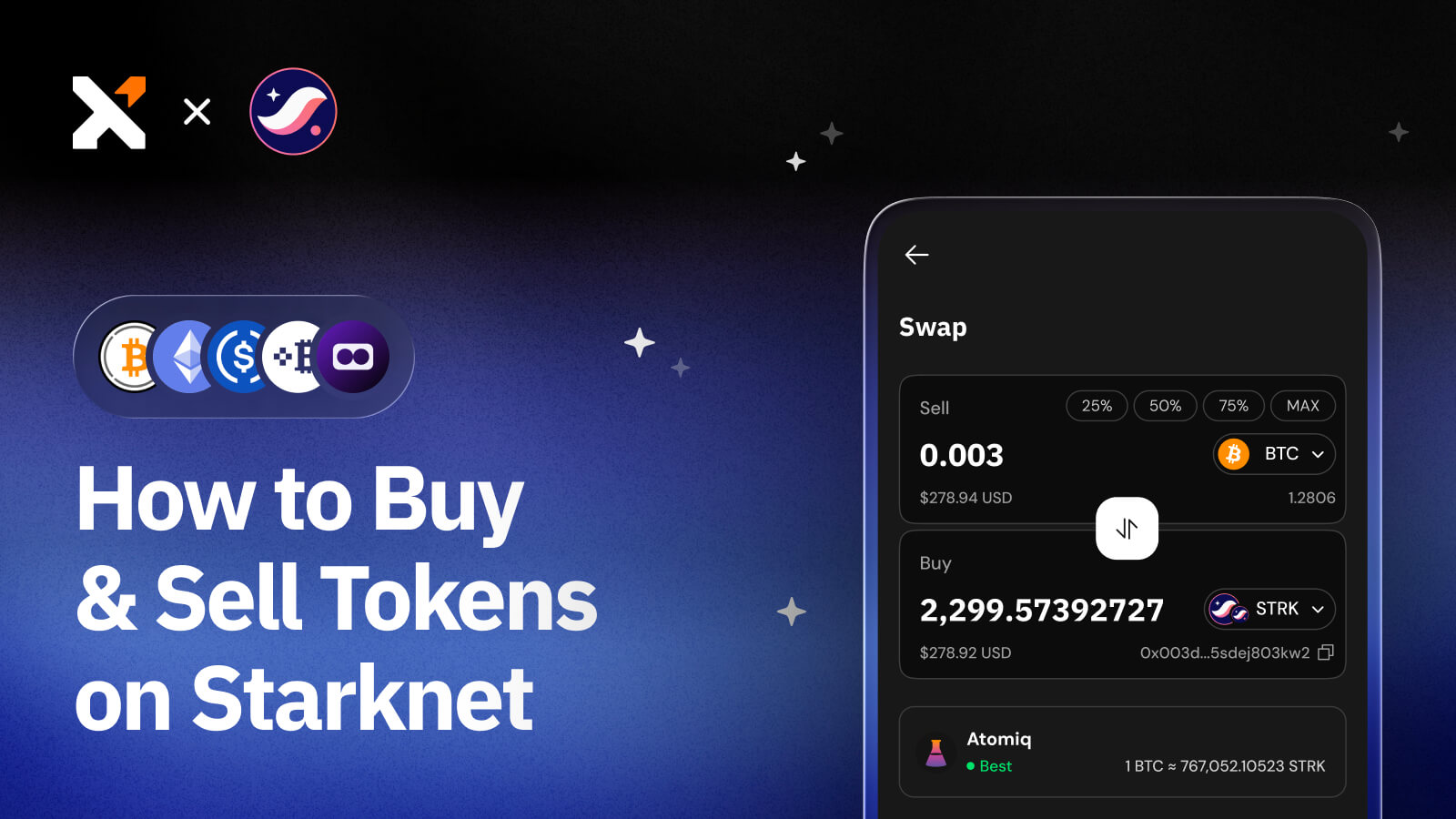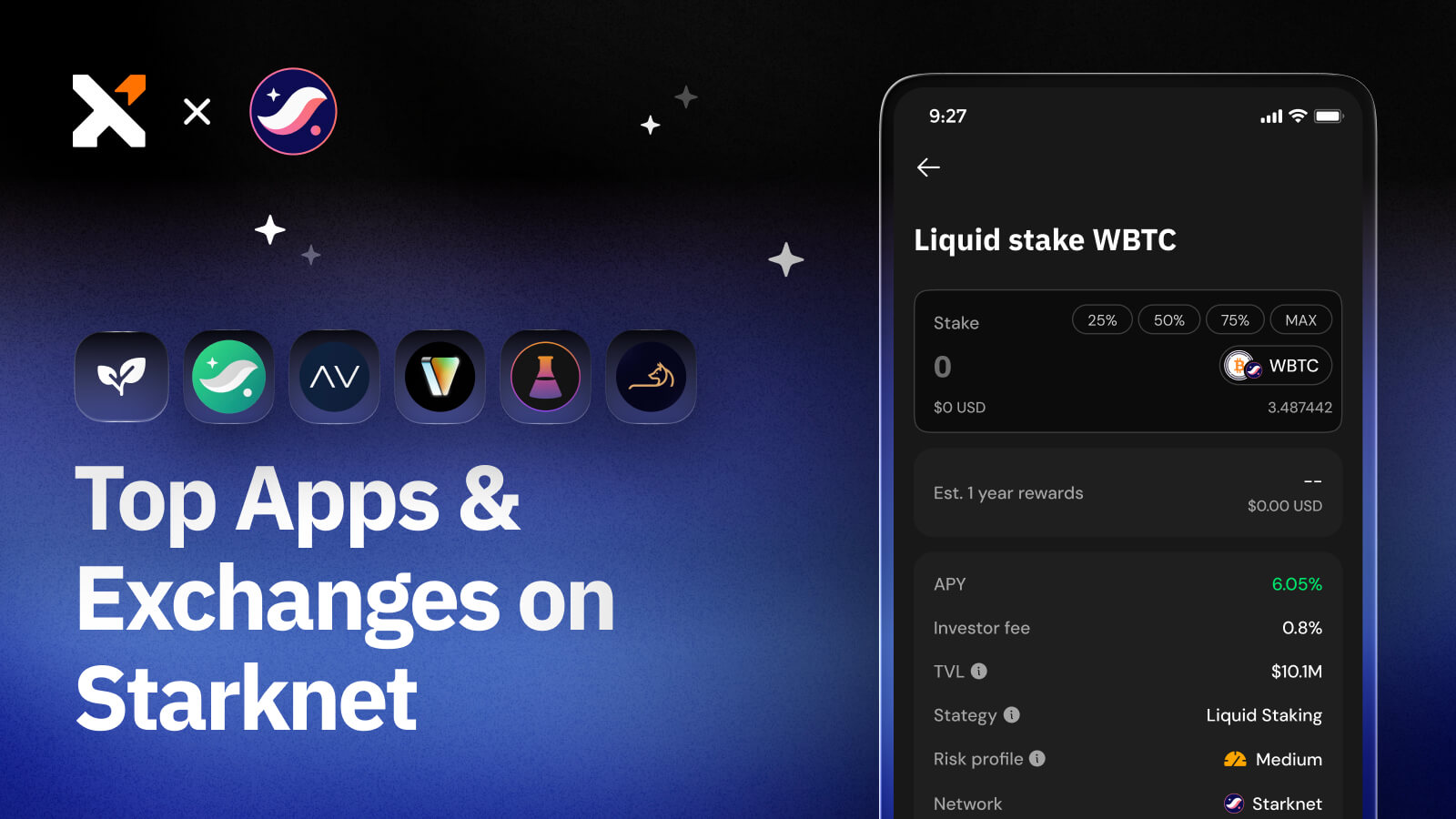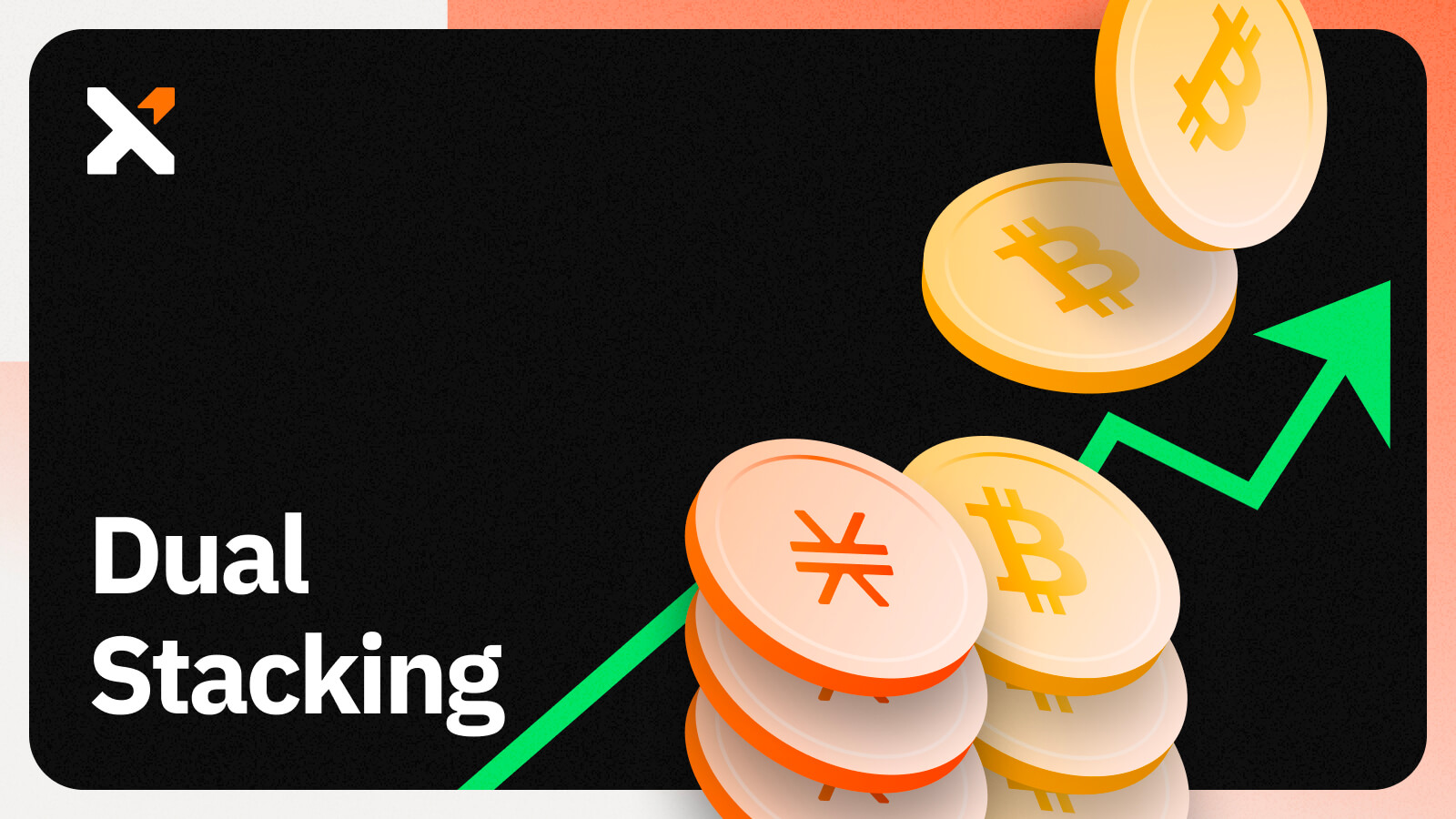Crypto Staking Explained: How It Works, Benefits & Risks
Learn about staking crypto, how it works, what the different staking types are, what the benefits and risks are, and how you can get started with Xverse.

Sign up for updates!
Stay tuned to our latest news and updates
.svg)
Staking is a productive way to put your crypto to work and earn a yield. By locking up your crypto holdings, you can earn rewards without exposing yourself to unnecessary risks.
Read on to find a breakdown of how staking works, the different types of staking, the benefits and potential risks, and everything else you need to know about this form of reward-giving blockchain consensus mechanism.
What Is Staking Crypto?
Staking is the process of locking up a cryptocurrency to gain a vote in its ecosystem and receiving rewards in return. When you stake, you get voting powers you can exercise directly or delegate to someone else who will perform tasks in your name on the blockchain network.
In both cases, you receive staking rewards because your vote helps the blockchain process transactions, which could be payments or governance decisions.
However, staking cryptocurrencies is only possible on certain types of blockchains. These are called Proof of Stake (PoS) blockchains, and they process their transactions through a consensus mechanism called Proof of Stake.
Proof of stake is unlike Bitcoin's Proof of Work (PoW) consensus mechanism. In the latter, instead of locking up crypto, miners invest computational processing power to solve mathematical problems, which is critical for verifying and validating transactions.
However, there’s also the option of DeFi staking, which functions in the same way–you lock up a token in a protocol to earn rewards–but you do so on a DeFi platform as opposed to on a PoS blockchain.
How Does Staking Crypto Work?
Staking can be custodial or non-custodial.
In non-custodial staking, you retain full control of your crypto but can't move it to another address while it is still staked. In custodial staking, however, which generally happens through centralized exchanges, the platform handles the entire process and has much more control over your crypto. That means you have to trust the third-party platform to act honestly.
In more specific terms, the staking process involves sending a special message from the wallet holding your crypto to a blockchain, protocol, or smart contract requesting that it locks the assets for a specific period so that they can't be moved to another wallet.
More importantly, that message signals to the network to count the crypto in the wallet as part of a stake of a particular node. This increases the node's chances of being selected to participate in updating the network’s ledger, and of course, that means more rewards, which are shared with those who contribute to its stake.
Types of Cryptocurrency Staking Explained
There are different types of staking, with the following being the most common:
Delegated Staking
Delegated staking is a form of crypto staking in which you assign your voting power to someone else. This is your option if you can’t or don’t want to run your own validator node on a network.
By delegating it to a validator, you get rewards while having someone else do the heavy lifting of maintaining a node on a blockchain network. Delegated Staking is, in particular, the option when you don't have the skill or capacity to set up and run a validator node yourself.
Liquid Staking
Liquid staking lets you stake your coins, but also participate in other DeFi economic activities using the same coins without unstaking them. It lets you access the liquidity you need from staked coins, hence the name.
Protocols offering liquid staking usually give you a receipt in the form of a new token, which can be used the same way you’d use the staked crypto, including as loan collateral or an asset to lend or trade on exchanges. When the staking period ends, the staked coin is unlocked and returned to you, and subsequently, the receipt token is burned or becomes invalid.
Restaking
Restaking refers to the possibility of staking your coins on a main blockchain and on other protocols at the same time. This leads to higher amounts of rewards.
Some protocols using this type of staking actually use a form of liquid staking to make it possible for you to participate on multiple platforms with the same assets. However, restaking comes with a higher risk of slashing, which is a form of punishment for a validator that doesn’t work in the best interest of the network. When this happens, the stake or part of it is lost.
Pooled Staking
Pooled staking lets you combine your coins with those of others so that they are then staked together through a single validator node. The voting powers and rewards are distributed based on your contribution to the pool.
In other words, you’re just pooling resources with other people to stake as a unit, which increases your potential and opportunities to earn rewards. This is especially useful for those who want to participate in staking but don’t have enough resources to do so independently, especially because the entry threshold for staking on some blockchains and protocols can be very high.
DeFi Staking of PoW Coins
Proof-of-Work (PoW) blockchains like Bitcoin aren’t designed to provide staking opportunities. However, with the rise of Bitcoin Layer 2 (L2) protocols, it has become possible to implement some elements of staking on the Bitcoin network.
Some L2 protocols being launched on top of Bitcoin, most of which provide Bitcoin DeFi services, use mechanisms that are, to some extent, similar to PoS to process their transactions before they are sent to the Bitcoin base layer for confirmation.
For example, Stacks, another smart contract layer on top of Bitcoin, uses a Proof of Transfer (PoX) consensus mechanism. This mechanism allows you, as part of securing the L2, to stack STX, the native token, and earn bitcoin rewards.
Alternatively, you can also find Bitcoin staking protocols on L2s, such as Acre, which allows you to stake native BTC to receive rewards paid out in tokenized bitcoin.
Benefits of Staking Crypto
Now that you know the basics, let’s discuss what’s in it for you. There are several benefits to staking your crypto. The following are the main ones:
Passive income without selling your cryptocurrency
This is possibly the single biggest benefit of crypto staking. Basically, you're letting your crypto assets keep earning you money even if the price isn't going up, and you can do so without selling. With some staking pools, you can earn double-digit annual percentage yield (APY).
Potentially high returns, uncorrelated to global markets
Crypto staking can sometimes result in high rewards. Best of all, you can often earn these rewards even if the wider economy outside cryptocurrency and DeFi isn't doing so well. Also, the larger your stake in a liquidity pool or PoS network, the larger your rewards will be.
Minimal Investment Cost
While some blockchains require a very large minimum crypto stake, others don't. Instead, it's possible to start staking with extremely small amounts and with no equipment costs. Joining delegated and pooled staking, in particular, is generally easy.
Risks of Staking Crypto
Staking can come with some risks, just like most other economic activities in the cryptocurrency landscape. If you're not careful about how or where you stake your cryptocurrency assets, it's possible to lose funds. Here are some key risks:
Staking Periods
Many staking contracts include a lock-in period during which you won't be able to withdraw your crypto. If the value of your crypto tokens drops on the market during that time, you can suffer an overall loss until the price rises again (if it does).
An exception is liquid staking. With liquid staking, your coins aren’t completely inaccessible; you get tokens as a receipt that you can use for trading, lending, loan collateral, etc. This can be a good way to hedge against market movements during the staking period.
Trust Risks
Some staking pools require you to transfer your cryptocurrency to a wallet you don’t control. If that exchange has weak security or is simply dishonestly run, you may lose your assets.
Hacking Dangers
Some staking protocols require technical steps to configure your wallet and download certain software. If you misconfigure something during this process, you might accidentally expose yourself and your assets to hacking risks.
Smart Contract Risk
While smart contracts eliminate the need for third-party interventions, they’re still fallible. The code can have bug issues that aren’t caught in time. For this reason, many protocols have ongoing bug bounty programs to solve these potential issues before they become costly.
Stack STX to Earn Bitcoin With Xverse Stacking
You can start stacking STX tokens using Xverse Stacking and earn native Bitcoin rewards. With Xverse, you can start stacking with as little as 500 STX by connecting your Xverse wallet.
Download Xverse today and start stacking STX to earn BTC.
FAQs
Can I lose my crypto if I stake it?
It’s possible to lose the crypto you stake. However, staking in well-designed protocols and blockchains is usually safe. Doing research before committing to any staking approach is important, especially to minimize risks of theft, slashing, smart contract vulnerabilities, etc.
Which crypto is best for staking?
The answer to this question depends on your personal preferences and how experienced you are with staking. For many, ETH is the best choice as it’s on the biggest Proof of Stake blockchain, making it very secure. Others may find similarly major coins like ADA and SOL on Cardano and Solana, respectively, more enticing. Alternatively, you can stake all sorts of coins and tokens in DeFi protocols that allow for staking.
How do you start staking?
To start staking, you first need to decide which coin you want to stake and its reward opportunities. Then, check if you meet the staking threshold or decide if you want to opt for delegated or pooled staking. Find a reputable staking platform or exchange, then follow their steps to stake your coins.
What is the difference between staking and restaking?
While staking refers to the process of locking up a coin in one blockchain or protocol to get rewards, restaking means staking the same coin across more than one blockchain or protocol. This way, validators can receive more rewards from the same amount.
Share this article



.svg)




